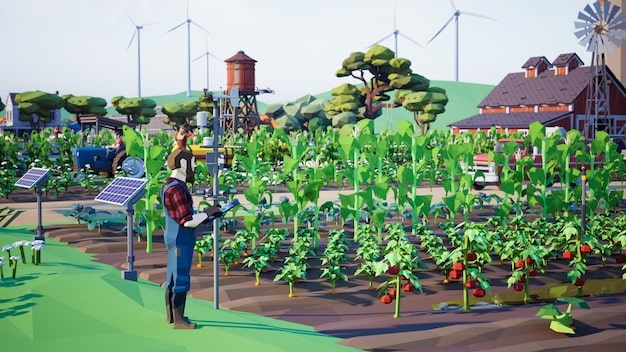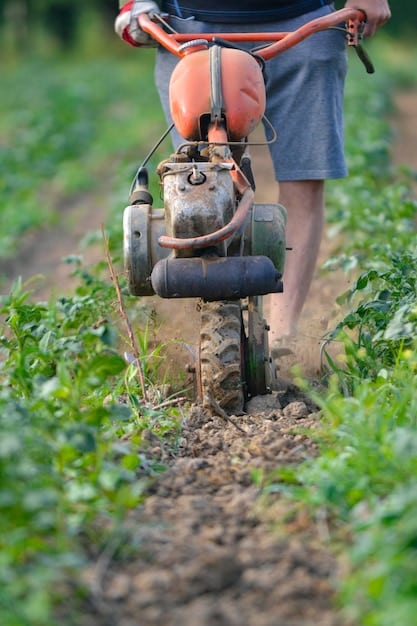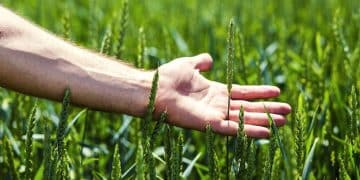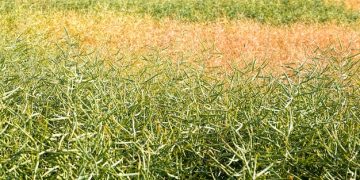Sustainable Weed Management: Reduce Herbicide Use Effectively

Implementing sustainable weed management practices to reduce herbicide use involves integrating various methods such as crop rotation, cover crops, mechanical weeding, and biological controls to minimize reliance on chemical herbicides, promoting healthier ecosystems and sustainable agriculture.
Are you looking to reduce your reliance on herbicides while maintaining effective weed control? Implementing sustainable weed management practices is key to healthier ecosystems and long-term agricultural sustainability.
Understanding the Need for Sustainable Weed Management
The overuse of herbicides in agriculture has led to a variety of environmental and health concerns. Sustainable weed management offers a practical alternative by focusing on integrated strategies that minimize the need for chemical inputs.
By adopting these practices, farmers can protect biodiversity, reduce soil degradation, and ensure the long-term viability of their land.
Environmental Impact of Herbicide Use
Herbicides can have detrimental effects on the environment, contaminating water sources and harming non-target species. Sustainable methods mitigate these risks.
Health Concerns Related to Herbicide Exposure
Exposure to herbicides has been linked to various health issues in humans and animals. Reducing herbicide use can improve public health.
- Minimize soil and water contamination.
- Protect beneficial insects and wildlife.
- Reduce the risk of herbicide resistance in weeds.
Sustainable weed management is not just an environmentally friendly choice; it’s a strategic approach to ensure long-term agricultural productivity and health.
Crop Rotation as a Weed Management Tool
Crop rotation is a cornerstone of sustainable agriculture, offering a natural and effective way to manage weeds. By alternating crops, farmers can disrupt weed life cycles and reduce weed pressure.
This practice also improves soil health, enhances nutrient cycling, and reduces the need for synthetic inputs.

How Crop Rotation Disrupts Weed Cycles
Different crops have different growth habits and nutrient requirements, which can interfere with weed establishment and reproduction.
Selecting Crop Rotations for Weed Suppression
Choosing crops that compete effectively with weeds or produce allelopathic compounds can further enhance weed control.
- Alternate between broadleaf and grass crops.
- Include cover crops in the rotation.
- Consider crops with allelopathic properties.
Implementing a well-designed crop rotation strategy can significantly reduce weed populations and reliance on herbicides, fostering a more resilient and sustainable farming system.
Cover Crops for Weed Suppression and Soil Health
Cover crops are planted primarily to benefit the soil and suppress weeds, rather than for harvest. They provide a range of benefits, including improved soil structure, nutrient retention, and weed control.
Using cover crops can create a more competitive environment for weeds, reducing their ability to thrive.
Benefits of Cover Crops in Weed Management
Cover crops compete with weeds for resources, physically suppress weed growth, and release allelochemicals that inhibit weed germination.
Choosing the Right Cover Crops for Your Needs
Selecting cover crops that are well-suited to your climate, soil type, and cropping system is essential for maximizing their benefits.
- Select cover crops that germinate quickly and establish a dense canopy.
- Consider using a mix of cover crop species for broader weed control.
- Terminate cover crops at the appropriate time to prevent them from becoming weeds themselves.
Integrating cover crops into your farming system enhances weed suppression, improves soil health, and reduces the need for herbicides, contributing to a more sustainable agricultural approach.
Mechanical Weed Control Methods
Mechanical weed control involves using physical methods to remove or suppress weeds. These techniques include hoeing, cultivating, mowing, and hand-weeding.
While mechanical methods may be more labor-intensive than herbicide applications, they offer a targeted and environmentally friendly approach to weed management.

Types of Mechanical Weed Control Tools
Various tools are available for mechanical weed control, ranging from simple hand tools to tractor-mounted implements.
Timing and Frequency of Mechanical Weed Control
Timing is crucial for effective mechanical weed control. Weeds are most vulnerable when they are small and actively growing.
- Cultivate or hoe early and often to prevent weeds from establishing.
- Mow weeds before they set seed.
- Hand-weed around crops to remove any weeds that escape other control methods.
Mechanical weed control provides a precise and sustainable way to manage weeds, reducing the need for herbicides and promoting a healthier farming environment.
Biological Weed Control Strategies
Biological weed control involves using living organisms, such as insects, pathogens, and grazing animals, to suppress weed populations. This approach offers a natural and self-sustaining way to manage weeds.
However, biological control requires careful planning and monitoring to ensure that the control agents are effective and do not harm non-target plants.
Using Insects for Weed Control
Certain insects are highly specialized in feeding on specific weed species. Introducing these insects can help to control weed populations.
Pathogens as Biological Herbicides
Some pathogens, such as fungi and bacteria, can be used as biological herbicides to kill or suppress weeds.
- Ensure that the biological control agents are specific to the target weed species.
- Monitor the effectiveness of the biological control program regularly.
- Avoid using broad-spectrum pesticides that could harm the biological control agents.
Biological weed control can be an effective component of an integrated weed management program, reducing the need for herbicides and promoting a more balanced ecosystem.
Integrated Weed Management (IWM) Systems
Integrated Weed Management (IWM) involves combining multiple weed control methods to achieve effective and sustainable weed suppression. This approach recognizes that no single method is perfect and that a combination of strategies is often necessary.
IWM systems consider the specific weed species present, the crop being grown, and the environmental conditions to develop a customized weed management plan.
Key Components of an IWM System
An effective IWM system includes preventive measures, cultural practices, mechanical control, biological control, and, when necessary, judicious use of herbicides.
Developing a Customized IWM Plan
Developing a customized IWM plan involves assessing the weed pressure in your fields, identifying the most vulnerable stages of the weed life cycle, and selecting the most appropriate control methods.
- Start with preventive measures to reduce weed introduction and spread.
- Use cultural practices to create a competitive environment for crops.
- Implement mechanical and biological control methods to suppress weed populations.
By integrating various weed control strategies, IWM systems minimize reliance on herbicides, promoting healthier ecosystems and sustainable agriculture.
| Key Point | Brief Description |
|---|---|
| 🌱 Crop Rotation | Alternating crops disrupts weed cycles and reduces pressure. |
| 🌿 Cover Crops | Suppresses weeds and improves soil health. |
| 🚜 Mechanical Control | Physical methods like hoeing and mowing remove weeds. |
| 🐛 Biological Control | Using living organisms to suppress weed populations. |
Frequently Asked Questions (FAQ)
▼
Sustainable weed management reduces herbicide use, protects biodiversity, improves soil health, and ensures long-term agricultural viability by integrating various methods.
▼
Crop rotation disrupts weed life cycles by alternating crops with different growth habits and nutrient requirements, reducing weed establishment and reproduction.
▼
Cover crops compete with weeds for resources, physically suppress their growth, and release allelochemicals that inhibit weed germination, improving soil health simultaneously.
▼
Mechanical methods include hoeing, cultivating, mowing, and hand-weeding, which physically remove or suppress weeds without relying on chemical herbicides.
▼
Biological weed control uses living organisms like insects and pathogens to suppress weed populations, providing a natural and self-sustaining approach to weed management.
Conclusion
By implementing these sustainable weed management practices, farmers can significantly reduce their reliance on herbicides, fostering healthier ecosystems, improving soil quality, and ensuring long-term agricultural sustainability. Adopting an integrated approach that combines crop rotation, cover crops, mechanical methods, and biological controls is key to effective and environmentally responsible weed management.





